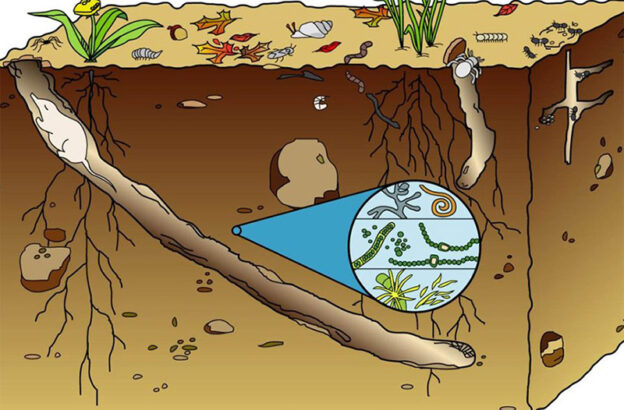Soil – Part 2
Macroorganisms
These are the larger soil animals that can be easily seen. These include earth worms, moles, nematodes, crickets, frogs and snails among others
Importance of Macroorganisms in soil
- They burrow through the soil thus increasing aeration
- Some for example fungi breakdown plant and animal material as they feed eventually improving on soil fertility. So, they bring about decay
- They mix soil components by moving through the different soil layers
- They bring about biological weathering as they break down organic and inorganic materials to form soil particles eg termites break down plants hence forming new soil
- When they die, they add to the humus content of soil.
Soil air:
It exists mainly in form of oxygen and carbon dioxide and nitrogen located in spaces between the aggregate and soil particles.
- Oxygen is required for Germinating seeds.
- Oxygen is also important for root development
- in air also enables the decay of dead matter
- Oxygen in air is used in respiration in the living organisms to get energy
- The nitrogen in air can be converted to nitrates which can be used by organisms.
- The carbon dioxide can also be used by underground bacteria to carry out photosynthesis
Water:
The water available to plants exists as a thin film held around mineral particles. Clay soil holds more water than sandy soil because sandy soil has large pore spaces. Deep soils hold more water than shallow soils while soil with much organic matter absorbs more water than that with low organic matter content.
- Water softens the soil for root penetration, dissolves salts making it easy for plants to absorb them.
- Water is necessary for germination as it soften the seed coat enabling penetration of the first root
- When absorbed by the plant, water brings about cooling of the plant during hot conditions.
- It is also used in photosynthesis as a raw material to make food.
- Water in soil prevents desiccation of soil organisms such as snails, slugs, and earthworms
- When small non-woody plants take in water, it provides them with support off the ground.
- Water dissolves mineral salts so that they are easily absorbed by plants
Questions
- What are soil macroorganisms? Give two examples of such
(a) Give two examples of animals that make tunnels through soil. What is the importance of such tunnels to soil?
(b) In your own words, explain how living organisms may lead to weathering. - (a) Name the major components of soil air.
(b) Give five ways how air is important to soil - Give four ways how soil water to living organisms in soil

